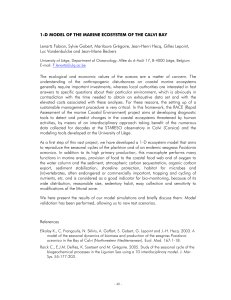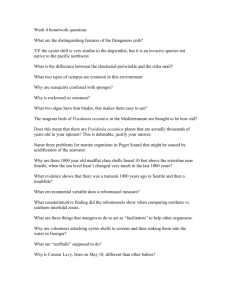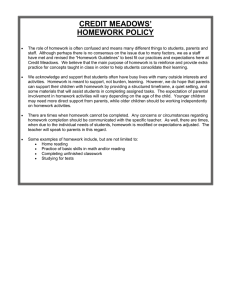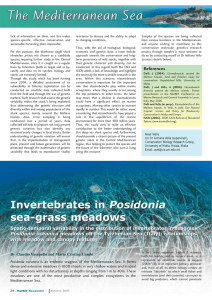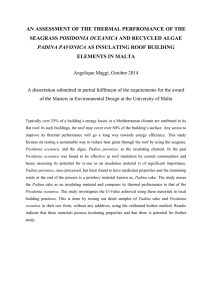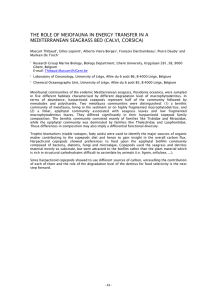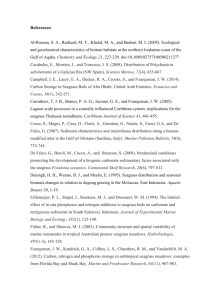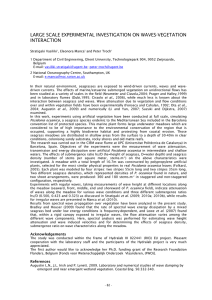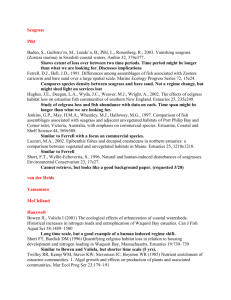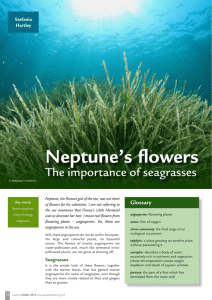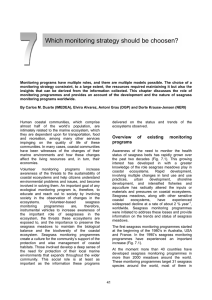ORGANISMS AS ECOSYSTEMS ENGINEERS: THE CASE OF AMPHIPOD POSIDONIA OCEANICA
advertisement
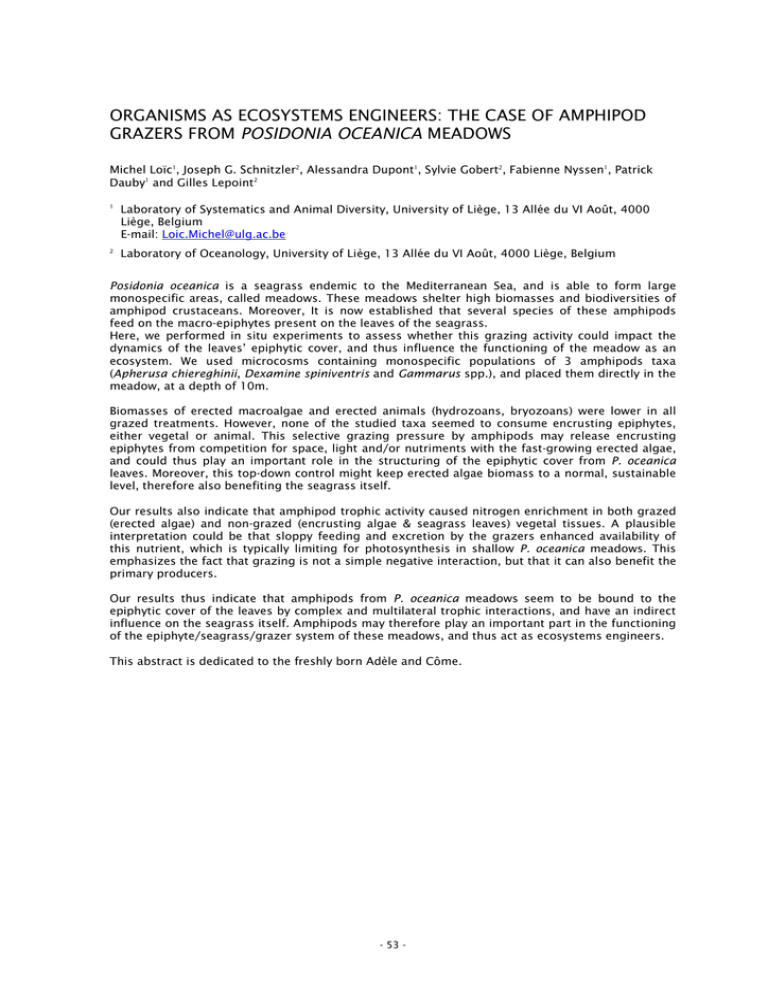
ORGANISMS AS ECOSYSTEMS ENGINEERS: THE CASE OF AMPHIPOD GRAZERS FROM POSIDONIA OCEANICA MEADOWS Michel Loïc1, Joseph G. Schnitzler2, Alessandra Dupont1, Sylvie Gobert2, Fabienne Nyssen1, Patrick Dauby1 and Gilles Lepoint2 1 Laboratory of Systematics and Animal Diversity, University of Liège, 13 Allée du VI Août, 4000 Liège, Belgium E-mail: Loic.Michel@ulg.ac.be 2 Laboratory of Oceanology, University of Liège, 13 Allée du VI Août, 4000 Liège, Belgium Posidonia oceanica is a seagrass endemic to the Mediterranean Sea, and is able to form large monospecific areas, called meadows. These meadows shelter high biomasses and biodiversities of amphipod crustaceans. Moreover, It is now established that several species of these amphipods feed on the macro-epiphytes present on the leaves of the seagrass. Here, we performed in situ experiments to assess whether this grazing activity could impact the dynamics of the leaves’ epiphytic cover, and thus influence the functioning of the meadow as an ecosystem. We used microcosms containing monospecific populations of 3 amphipods taxa (Apherusa chiereghinii, Dexamine spiniventris and Gammarus spp.), and placed them directly in the meadow, at a depth of 10m. Biomasses of erected macroalgae and erected animals (hydrozoans, bryozoans) were lower in all grazed treatments. However, none of the studied taxa seemed to consume encrusting epiphytes, either vegetal or animal. This selective grazing pressure by amphipods may release encrusting epiphytes from competition for space, light and/or nutriments with the fast-growing erected algae, and could thus play an important role in the structuring of the epiphytic cover from P. oceanica leaves. Moreover, this top-down control might keep erected algae biomass to a normal, sustainable level, therefore also benefiting the seagrass itself. Our results also indicate that amphipod trophic activity caused nitrogen enrichment in both grazed (erected algae) and non-grazed (encrusting algae & seagrass leaves) vegetal tissues. A plausible interpretation could be that sloppy feeding and excretion by the grazers enhanced availability of this nutrient, which is typically limiting for photosynthesis in shallow P. oceanica meadows. This emphasizes the fact that grazing is not a simple negative interaction, but that it can also benefit the primary producers. Our results thus indicate that amphipods from P. oceanica meadows seem to be bound to the epiphytic cover of the leaves by complex and multilateral trophic interactions, and have an indirect influence on the seagrass itself. Amphipods may therefore play an important part in the functioning of the epiphyte/seagrass/grazer system of these meadows, and thus act as ecosystems engineers. This abstract is dedicated to the freshly born Adèle and Côme. - 53 -
